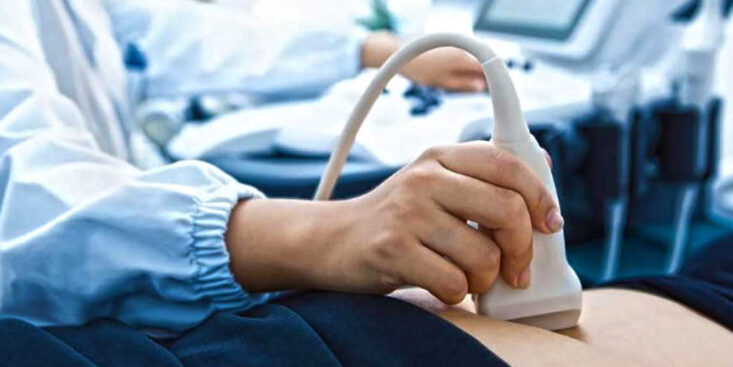Look to Your Own Devices: Biotech Stars of the ASX
In the first of a series on Australian biotech success stories, we start with some of the outstanding medical device stocks on the ASX.
Nanosonics (NAN, $6.09)
Market capitalisation: $1.8 billion
Three-year total return: 37.2% a year
Analysts’ consensus target price: $6.04 (Thomson Reuters), $6.24 (FN Arena)
Infection prevention specialist Nanosonics has effectively disrupted the way that ultrasound probes are disinfected between use: where traditional disinfectant methods use corrosive chemicals that are both inefficient and potentially hazardous to the user, Nanosonics’ product Trophon is a biocide that is much more efficient and environmentally friendly: the only by-products are oxygen and water, meaning no exposure to toxic chemicals, and no hazardous by-products or waste to dispose of afterwards. The system is now sold in 21 countries, with North America contributing more than 90% of revenue.
COVID-19-related setbacks have hit the share price this year – hospitals, which buy Trophon, have had other priorities to think about – but analysts are expecting FY20 revenue of about $105 million (which would represent 24% growth) and net profit of about $12.5 million.
The scope for future growth is that the company’s technology platform is highly regarded around the world, and Nanosonics has flagged a new platform that it says is “designed to address a major unmet need in infection prevention today.” Since the advent of COVID, disinfection technology has attained the status of a powerful long-term investment thematic – the market is intensely interested in what this new platform will be.
Nanosonics is a great Australian biotech success story – but unfortunately, analysts see NAN as fully valued at this price.
EMVision Medical Devices (EMV, $1.74)
Market capitalisation: $122 million
Three-year total return: n/a
Analysts’ consensus target price: n/a
Listed in December 2018 at 25 cents, EMVision has been a major success for float subscribers. The company’s main product is a brain scanner, used to diagnose and monitor stroke and traumatic brain injury. EMVision aims to revolutionise the imaging of strokes and traumatic brain injuries through the development and commercialisation of portable medical imaging technology.
Its first brain scanner is a commercial product, at a manageable price, that allows for quick, efficient and scalable brain scanning. The EMV images distinguish abnormal brain tissue from healthy brain tissue, which is often less clear in CT scans. Last month, EMVision reported encouraging images from its clinical trial, in which the company’s imaging algorithms were able to detect, localise and classify haemorrhagic stroke. The data has demonstrated the potential of EMVision’s techniques to not only detect and localise strokes, but importantly to classify them based on differences between blood, ischaemic tissue or oedema.
The clinical trial results will help to push along the commercialisation of EMVision’s portable medical imaging product and progress regulatory approvals. Ultimately the company wants to bring to the market a portable helmet-like device to detect strokes and other brain injuries in a timely and non-invasive manner, in a setting like an ambulance – before the patient can get to a computer tomography (CT) or magnetic resonance imaging (MRI) scan in a hospital.
AVITA Therapeutics (AVH, $6.10)
Market capitalisation: $470 million
Three-year total return: 347.4% a year
Analysts’ consensus target price: $16.20 (Thomson Reuters),
AVITA is a regenerative medicine company that is commercialising the RECELL technology, which was developed by plastic surgeon Professor Fiona Wood at Royal Perth Hospital to treat burns patients. RECELL takes a small sample of the patient’s own skin, from which, using a proprietary process, AVITA prepares a “suspension” of skin cells, which is then sprayed onto areas of the patient requiring treatment. The RECELL suspension regenerates natural healthy epidermis.
The beauty of the RECELL process is that because skin cells contain information to “know” what a person’s skin should look like – for example, facial skin cells “know” that they are facial skin cells – they can signal and recruit other cells, including nerve cells, to come in. This means that, apart from burns, RECELL also has applications in other skin-related areas such as chronic wound care (trauma, ulcers), plastic surgery, vitiligo (a disease that results in a loss of colour or pigmentation in patches of skin), aesthetics indications and tattoo removal.
The RECELL system was approved by the US Food & Drug Administration (FDA) in September 2018. AVITA recently “re-domiciled” to the US – the securities listed on the ASX are CHESS Depository Receipts (CDIs), and the company reports in US$. The company is still a loss-maker – but in FY20, AVITA’s total revenue surged by 160%, to US$14.32 million.
PolyNovo (PNV, $2.19)
Market capitalisation: $1.4 billion
Three-year total return: 122% a year
Analysts’ consensus target price: $2.70 (Thomson Reuters), $2.60 (FN Arena)
PolyNovo has more than a passing similarity to AVITA – it is commercialising the NovoSorb Biodegradable Temporising Matrix (BTM) technology, which was developed by the CSIRO. NovoSorb is a lattice-style device to treat serious burns and other major wounds: it is a 2-millimetre-thick biodegradable polymer foam wound scaffolding that has three layers: a sealing membrane, a bonding layer and the foam scaffolding that enables integration.
NovoSorb provides a ‘home’ for cells to migrate and disrupts the ability of collagen protein fibres to form knots and bundles. It is placed on the wound area where it forms a closed protective zone, temporarily closing the wound and helping the body to generate new tissue. After use, the material biodegrades and is excreted either through urine or respiration.
The material can be produced as a fibre, a cardiac stent or films and foams.
PolyNovo also has FDA approval for NovoSorb and sells it in the US; it was approved for sale in Europe in December last year. The company says it has a US$1.5 billion market opportunity in the treatment of full-thickness wounds and burns – but that NovoSorb could easily be extended into the hernia and breast treatment markets, which are even bigger.
Oncosil Medical Limited (OSL, 10.5 cents)
Market capitalisation: $87 million
Three-year total return: 6.8% a year
Analysts’ consensus target price: 42 cents (Thomson Reuters)
Oncosil Medical’s lead product, OncoSil, is a targeted radioactive isotope (Phosphorus-32) that is implanted directly in micro-particles into a patient’s pancreatic tumour, through endoscopic ultrasound. OncoSil implants a pre-determined dose of beta radiation directly into the cancerous tissue: this delivers more concentrated and localised “beta” radiation compared with external beam radiation. The device then works with chemotherapy to destroy the cancerous tissue.
The FDA granted the device “investigational device exemption” (IDE) status in 2016, and OncoSil looked to be on its way to the clinic.
But a big setback hit the company in March 2019 when the British Standards Institute (BSI) denied its application for CE Mark certification, which indicates that a product conforms with health, safety, and environmental protection standards for products sold within the European Economic Area (EEA). The unexpected bingle sent OSL back to the BSI with more clinical data and testimonials, and in November 2019, CE Marking came through, for locally advanced pancreatic cancer in combination with standard of care chemotherapy.
Then, in March this year, the US FDA granted the company breakthrough device designation (BDD), in relation to inoperable pancreatic cancer. The device is now designated as a breakthrough device in the European Union, UK and USA. In June, it was also approved for sale in Singapore.
The problem – and the opportunity for OSL – is that pancreatic cancer is a huge area of unmet need, because the prognosis is very poor. Surgery is not possible in 85 percent of cases and only five percent will survive beyond five years. About 85,000 new cases in Europe are detected annually, with a further 46,000 new cases in the US. It could be a $1 billion annual market – and Oncosil has a genuine breakthrough treatment. As well, the OncoSil device is a unique platform technology that could be aimed at most solid tumour types.











